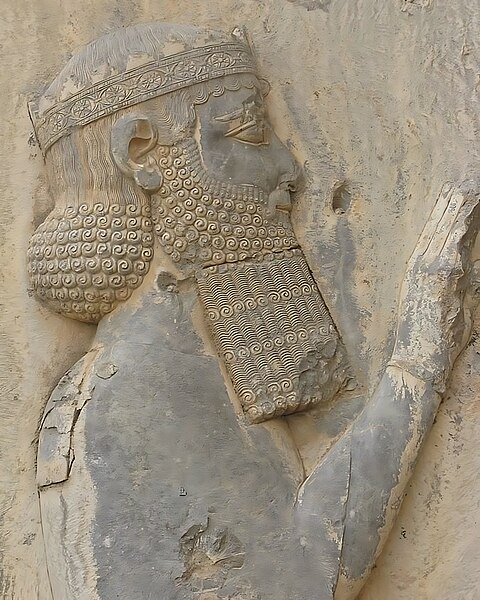Skudra was a province (satrapy) of the Persian Achaemenid Empire in Europe between 510s BC and 479 BC. Its name is attested in Persian and Egyptian inscriptions (an Egyptian record of c. 498–497 BC, and a list on the tomb of Darius the Great at Naqsh-e Rustam, c. 486 BC. It is believed to have comprised the lands now known as Thrace and Macedon.
Skudra was the westernmost territory of the Achaemenid Empire, comprising the area of Macedonia and Thrace, to the north of Greece
"Ionian with shield hat" (Macedonian) soldier of the Achaemenid army, circa 480 BCE. Xerxes I tomb relief.
Skudrian (Thracian or Macedonian) soldier of the Achaemenid army, circa 480 BCE. Xerxes I tomb relief.
"Saka beyond the sea", soldier of the Achaemenid army, circa 480 BCE. Xerxes I tomb relief.
Darius I, commonly known as Darius the Great, was a Persian ruler who served as the third King of Kings of the Achaemenid Empire, reigning from 522 BCE until his death in 486 BCE. He ruled the empire at its territorial peak, when it included much of Western Asia, parts of the Balkans and the Caucasus, most of the Black Sea's coastal regions, Central Asia, the Indus Valley in the far east, and portions of North Africa and Northeast Africa including Egypt (Mudrâya), eastern Libya, and coastal Sudan.
The relief stone of Darius the Great in the Behistun Inscription
Gold foundation tablets of Darius I for the Apadana Palace, in their original stone box. The Apadana coin hoard had been deposited underneath (c. 510 BCE).
One of the two gold deposition plates. Two more were in silver. They all had the same trilingual inscription (DPh inscription).
"Gaumata" being trampled upon by Darius the Great, Behistun inscription. The Old Persian inscription reads "This is Gaumâta, the Magian. He lied, saying "I am Smerdis, the son of Cyrus, I am king"."








